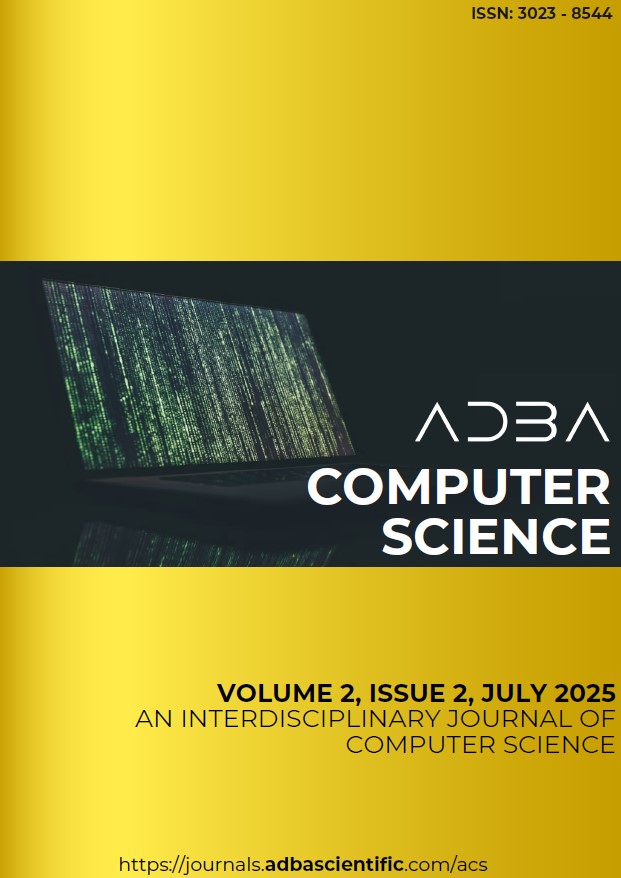Abstract
This study investigates the effect of varying aluminum (Al) content on the thermodynamic properties and phase stability of Mg-Al-Zn alloys using Computational Materials Science techniques. Three Mg-Al-Zn alloys were modeled with 3 wt%, 6 wt%, and 9 wt% Al, while the zinc (Zn) content was fixed at 1 wt% and magnesium (Mg) made up the remaining balance. Phase fraction diagrams were generated using the JMatPro software to analyze the phase transformations and their evolution with temperature. Additionally, the phase compositions and thermodynamic behavior of the alloys at a fixed temperature of 300 °C were examined. The chemical potential (Mμ) of each element was calculated to assess the energy state and stability of Mg, Al, and Zn in the alloys. Furthermore, the activity values of the elements were determined to evaluate their deviations from ideal behavior and effective thermodynamic concentrations within the alloys. The results reveal that increasing Al content significantly influences the phase stability and transformation behavior of the Mg-Al-Zn system. Higher Al concentrations led to a greater proportion of the intermetallic phase (Mg17Al12) at 300 °C, which in turn affected the chemical potential and activity of the constituent elements. This computational investigation provides insights into the role of Al in tailoring the thermodynamic properties and phase constitution of Mg-Al-Zn alloys, offering valuable guidance for alloy design and optimization in lightweight structural applications.
References
Alaca, Y., Y. Uzunoğlu, and B. Emin, 2025. Investigation of the effect of alloying elements on the density of titanium-based biomedical materials using explainable artificial intelligence. Computers and Electronics in Medicine, 2: 15–19.
Alidoust, M., D. Kleiven, and J. Akola, 2020. Density functional simulations of pressurized Mg-Zn and Al-Zn alloys. Physical Review Materials, 4.
Avedesian, M. and H. Baker, 1999. Magnesium and Magnesium Alloys. ASM International.
Brubaker, C. O. and Z.-K. Liu, 2004. A computational thermodynamic model of the Ca–Mg–Zn system. Journal of Alloys and Compounds, 370: 114–122.
Chen, L. Q., 2019. Chemical potential and Gibbs free energy. MRS Bulletin, 44: 520–523.
Dai, J. H., X. Wu, and Y. Song, 2013. Influence of alloying elements on phase stability and elastic properties of aluminum and magnesium studied by first principles. Computational Materials Science, 74: 86–91.
David, M., R. Foley, J. Griffin, et al., 2016. Microstructural characterization and thermodynamic simulation of cast Al–Zn–Mg–Cu alloys. International Journal of Metalcasting, 10: 2–20.
Emin, B., Y. Uzunoğlu, and Y. Alaca, 2025. Investigation of the impact of alloying elements on the mechanical properties of superalloys using explainable artificial intelligence. Chaos and Fractals, 2: 20–27.
Hayashi, N., K. Nakashima, M. Enoki, and H. Ohtani, 2020. Thermodynamic analysis of the Al-Mg-Zn ternary system. Journal of the Japan Institute of Metals and Materials, 84: 141–150.
Huang, X. et al., 2023. Influence of aluminum content on microstructure and performance of Mg-Zn-Ca-Al-Mn magnesium alloys. Journal of Alloys and Compounds, 948: 169719.
JMatPro Sense Software, Accessed in 2024. Modelling of phase transformations in magnesium alloys. https://www.sentesoftware.co.uk/site-media/mg-alloys-kinetics, [Online].
Kaya, A. A., 2020. A review on developments in magnesium alloys. Frontiers in Materials, 7: 198.
Li, Q., Y. Zhao, Q. Luo, S. Chen, J. Zhang, et al., 2010. Experimental study and phase diagram calculation in Al–Zn–Mg–Si quaternary system. Journal of Alloys and Compounds, 501: 282–290.
Liang, H., S.-L. Chen, and Y. A. Chang, 1997. A thermodynamic description of the Al-Mg-Zn system. Metallurgical and Materials Transactions A, 28: 1725–1734.
Luo, A. A. et al., 2012. Magnesium alloy development for automotive applications. Materials Science Forum, 706–709: 69–82.
Matsushita, T. and K. Mukai, 2018. Chemical Potential and Activity. Springer, Singapore.
Sahoo, S. K., M. Kumar, and S. K. Karak, 2024. Fugacity, Activity, Equilibrium Constant and Ellingham Diagram. Springer, Singapore.
Silva, A., J. Cao, T. Polcar, and D. Kramer, 2022. Design guidelines for two-dimensional transition metal dichalcogenide alloys. Chemistry of Materials, 34: 10279–10290.
Uzunoğlu, Y. and Y. Alaca, 2025a. High-accuracy prediction of the thermo-physical properties of 6xxx series aluminum alloys using explainable artificial intelligence. International Journal of Computational Materials Science and Engineering, 0: 2550010. [In Press].
Uzunoğlu, Y. and Y. Alaca, 2025b. Inverse prediction of the CALPHAD-modeled physical properties of superalloys using explainable artificial intelligence and artificial neural networks. Bitlis Eren Üniversitesi Fen Bilimleri Dergisi, 14: 331–347.
Uzunoğlu, Y., B. Emin, and Y. Alaca, 2025. High-accuracy prediction of mechanical properties of Ni-Cr-Fe alloys using machine learning. ADBA Computer Science, 2: 7–14.
Yu, J. and X. Li, 2011. Modelling of the precipitated phases and properties of Al-Zn-Mg-Cu alloys. Journal of Phase Equilibria and Diffusion, 32: 350–360.
Yuzbekova, D., J. Borisova, and A. Mogucheva, 2019. Influence of the phase composition of Al-Mg alloys on the propagation of deformation bands. In AIP Conference Proceedings, vol. 2167, p. 020395.
Zhang, Z., J. Zhang, X. Zhao, X. Cheng, X. Liu, et al., 2024. Thermodynamic simulation calculations of phase transformations in low-aluminum Zn-Al-Mg coatings. Materials, 17: 2719.

This work is licensed under a Creative Commons Attribution-NonCommercial 4.0 International License.

